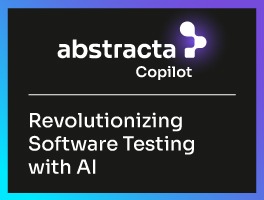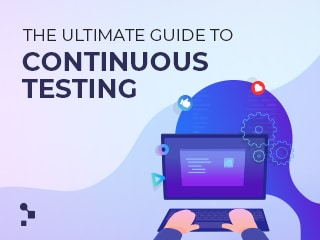

Think your code is fine? See how observability exposes hidden blockers, guiding dev, QA, and design teams to build software that actually works for people. Go back to the last time your team launched a new feature. Everything seemed to go smoothly. The code had been reviewed, tests passed at every sprint, and the deployment didn’t raise any alarms.
No errors, no alerts, no broken code, yet users dropped off. What happened? Something didn’t click. Users didn’t engage, support tickets hinted at confusion, or maybe there was just silence.
You thought you had done everything right on the surface, but the outcome told a different story. Not because the feature was broken, but because something was missing. A moment wasn’t understood, a message didn’t land, a page took slightly too long to load, or a small detail blocked the path forward.
These are the kinds of problems that traditional testing and monitoring rarely uncover. They live in how real people use what we build, in how interactions unfold beyond what we predicted.
Observability offers a way to see what really happens between systems and people. It doesn’t replace your current tools; it gives them meaning in context. It helps teams understand not just performance, but perception. Not only functionality, but fluidity.
Trying to close the gap between code and experience, and want your team to build with real clarity?
It’s time to integrate observability deeper into your development, testing, or UX practice.
We’re here to support that shift. Contact us!
Observability Is Not Just for DevOps Anymore
For a long time, observability belonged almost exclusively to infrastructure and operations. It was built to track system behavior, performance, and uptime. But as products became more complex and interconnected, that limited scope stopped being enough.
Today, many of the most pressing issues are happening far from the backend. They appear in the interfaces people use every day, in the flows they follow, in the decisions they make when a screen confuses them. That’s where teams need visibility. Not only in terms of failures, but in behaviors that point to uncertainty, hesitation, or missed intent.
This is why observability has spread beyond DevOps. Developers now use it to detect bugs that don’t show up in isolated environments. QA teams rely on it to find what scripted tests miss. Designers learn where users pause, abandon, or reroute. And UX writers gain insight into how language choices influence decisions across contexts.
Observability’s true value emerges when it becomes part of the way teams learn. When signals are shared across roles, they no longer serve only to detect problems; they start to guide decisions.
What started as a tool for keeping servers alive has become a foundation for understanding how software actually lives in people’s hands. And that shift is reshaping how quality is defined across entire teams.
From Logs to Humans: What Observability Unlocks
When we think of logs, traces, or metrics, we usually think of systems. Machines talking to machines. But that data doesn’t tell you what it felt like for someone trying to complete a task and running into confusion. It doesn’t show the invisible blockers, the ones that don’t crash anything but quietly derail the experience.
Observability helps you bridge that gap. It connects data and technical behavior with human behavior, so you can understand how interactions unfold. You stop relying on abstract assumptions and start seeing patterns that reflect how people move, hesitate, or shift course in real environments.
Some issues are easy to catch:
- A server returns an error.
- A function times out.
- An API doesn’t respond.
But others stay in the background until something reveals them:
- A button no one clicks because it doesn’t look interactive, or the text does not anticipate what comes next.
- A confirmation message that leaves the user wondering if it worked
- A journey that technically completes but gets abandoned because the next step isn’t clear
These aren’t system failures. They’re experiencing failures. Observability helps you surface them not as exceptions, but as stories, ones that explain what’s happening and why it matters.
Functional Quality in Context: Observability Meets Testing
Testing helps you verify that your product behaves as expected. But expectations are only part of the story. Real users behave in ways no test script can fully anticipate, and systems that pass every check may still fall short in practice.
This is where observability expands your view. It doesn’t replace testing; it enriches it by connecting outcomes to context.
Here are a few common scenarios where this matters:
- A flow considered low priority isn’t included in the test suite. Observability shows it’s actually one of the top-used paths on mobile.
- A form passes every visual and functional check, but fails silently in Safari for certain configurations.
- Load tests report solid performance, yet real users in one region experience timeouts and drop off at the same point every time.
To help your team act on this type of insight, here’s how observability can complement your testing process:
- Highlight real usage patterns: Identify flows that users rely on most, even if they weren’t originally prioritized.
- Reveal gaps in test coverage: Discover scenarios your scripts missed, especially edge cases becoming common.
- Connect frontend behavior with backend data: Understand how visual and functional elements behave across different devices and conditions.
- Prioritize bugs based on actual impact: Focus fixes where they’ll make the biggest difference for your users.
- Inform test design with live data: Use patterns and anomalies to shape better test cases grounded in reality.
Ready to evolve your testing from reactive to informed? We can help you build a smarter strategy, backed by observability.
Real-Time Observability with Datadog + Abstracta
Together with Datadog, we help you monitor, secure, and optimize every layer of your cloud infrastructure, without slowing down delivery.
👉 Book a Meeting
Guiding with Data: Turning Observability into Action
Having data shouldn’t be a challenge anymore. Teams collect it everywhere, from performance metrics and error logs to user flows and security events. The real challenge is making that data useful. And that’s where we come in.
At Abstracta, we work alongside your teams to help them act on what observability reveals. We go beyond dashboards to connect patterns with decisions, helping you shift from signal to strategy.
Thanks to our partnership with Datadog, we provide the technical backbone and the human guidance to help testers, developers, and product leads turn insights into improvements.
Here’s how we do it:
- We guide setup and integration, so your observability environment aligns with how your systems and teams work.
- We train your team to read what the data is really saying, so they don’t just monitor; they understand.
- We help teams prioritize based on impact, not volume, identifying which insights need action now and which inform longer-term improvement.
- We support performance engineering and system tuning, using real user signals to optimize how your software behaves under real conditions.
- We advise on security monitoring strategies, making continuous protection part of your delivery process.
Across industries, this work has helped teams respond faster, collaborate better, and make smarter choices. Whether it’s integrating observability into a low-code platform or supporting an enterprise fintech rollout, we bring clarity where it counts.
Looking to turn observability into action? Explore Abstracta & Datadog Professional Services to accelerate your cloud journey with confidence!
Performance, Accessibility, and UX: Making the Invisible Visible
Not everything that hurts the experience throws an error. Sometimes, the issue is just a pause. A hesitation. A decision not to continue. And often, these signals live in places we don’t typically monitor.
Observability brings them forward, especially in areas like performance perception, accessibility, and interface language.
Accessibility That Goes Beyond Standards
Meeting accessibility guidelines is important, but it’s only a starting point. What matters just as much is whether people can actually use your product in the ways they need to.
Observability helps teams see how assistive technologies interact with interfaces, whether navigation with a keyboard flows naturally, or whether alternative text is used in practice.
It shifts the conversation from compliance to usability, from passing tests to enabling real inclusion.
Performance That Feels Reliable
Speed is more than load time. It’s about how fast the product feels. Observability reveals when content loads in fragments, when layout shifts mislead attention, or when key elements appear just late enough to be missed.
These moments erode trust. But when you can see them clearly, you can start designing for fluidity and confidence.
UX Design That Sustains Interaction
Good design keeps people moving. When interactions feel clunky or visually overwhelming, users hesitate, even if nothing’s technically broken.
Observability helps you detect those subtle blockers: misaligned elements that draw focus away, interactions that feel heavier than they should, or paths that look more complex than they are.
By making these friction points visible, teams can refine the design to maintain flow, supporting a smoother, more intuitive journey through the interface.
Language That Clarifies and Guides
Words matter in every interaction. They set expectations, reduce anxiety, and move people forward. Observability allows writers and designers to see how people respond to copy. Not in theory, but in motion. You can spot where users pause after reading, where tooltips create confusion, or how a change in a CTA influences completion rates.
When you tie this insight to UX writing, you can refine not only what you say, but how and when you say it, so the product communicates naturally and effectively.
Keep on learning about the relevance of UX Writing for your product and ROI in this article: UX Writing: Crafting Impactful Content for Memorable Experiences
Integrating Interaction Readiness: A New Standard in Usability
At Abstracta, we’ve taken the evolution of usability a step further by adopting the concept of interaction readiness, inspired by the ISO/IEC 25010 standard. This goes beyond traditional usability to include dimensions like inclusiveness, learnability, and satisfaction in varied contexts.
We apply this framework in our observability-led testing and research, connecting metrics to real behaviors. It allows us to evaluate not only whether people can use the product, but also whether they can trust it, understand it, adapt it to their needs, and even enjoy using it.
When combined with observability, this perspective transforms how we design and validate digital experiences. Because it’s not just about removing barriers, but about creating meaningful, responsive, and inclusive interactions.
Why Observability-Driven Teams Deliver Better Software
When observability becomes part of your culture, collaboration takes on a new rhythm. Decisions are faster, questions are sharper, and improvements are no longer reactive; they’re intentional. Everyone works with the same visibility, and that changes what’s possible.
Here’s how that looks across roles:
| Role | Without Observability | With Observability |
| QA | Tests expected scenarios | Prioritizes based on real user behavior |
| UX | Designs and microcopies for ideal journeys | Refines based on actual usage and feedback |
| Development | Optimizes based on assumptions | Focuses on the most impactful areas |
| Releases | Responds to issues post-launch | Anticipates problems through early signals |
| Product | Works with static metrics | Makes decisions grounded in behavioral insight |
Teams move together. Not because they’re working faster, but because they’re working in tune with each other and with the people they’re building for.
Final Thoughts: What Quality Looks Like When You Can See It
Real quality isn’t something you check off at the end. It’s something that takes shape every time a person interacts with your product. When someone completes a task without friction, when they understand what to do next, when they trust what they see. That’s quality.
But you can’t improve what you can’t see. Observability helps you notice the quiet signals: the micro-moments where confusion starts, where frustration builds, or where clarity lands just in time. And when your team can see those moments, they can build something that doesn’t just work—it resonates.
Want to bring this level of clarity into how your team builds?
Let’s talk about what our team can do for you.
FAQs About Observability and Software Quality
What’s The Difference Between Monitoring And Observability?
Monitoring focuses on predefined metrics to catch known issues. Observability combines data from logs, traces, and real behavior to help you explore and understand what’s really happening, even when you don’t know what to look for yet.
How Does Observability Help With UX?
It reveals how users move through your product, where they hesitate, and what they ignore. That insight helps teams improve flows, simplify copy, and design with greater empathy.
Can Observability Replace Testing?
Not at all. Testing confirms that known cases work as intended. Observability adds depth by showing how the product behaves in the wild, helping teams identify and prioritize what matters most.
Is Observability Useful For Small Teams?
Yes. It can be especially valuable for small teams because it helps prioritize effort, detect silent issues, and make confident decisions without needing a full analytics or QA department.
How Can I Start Using Observability In My Team?
Start by choosing a few critical user flows or components. Use tools that collect signals across the frontend and backend, and review the data in regular team discussions. Let those insights shape your roadmap and your priorities.
How We Can Help You
With over 16 years of experience and a global presence, Abstracta is a leading technology solutions company with offices in the United States, Chile, Colombia, and Uruguay.
Partnered with industry leaders like Microsoft, Datadog, Tricentis, Perforce, and Saucelabs, we specialize in software development, AI-driven innovations & copilots, and end-to-end software testing services.
We work with teams that want to build software that feels as good as it works. We help you see what your users experience, where things break down, and how to improve, not just technically, but emotionally, functionally, and inclusively.
Let’s uncover what’s happening in your product and turn that understanding into better outcomes. Contact us!
Follow us on Linkedin & X to be part of our community!
Recommended for You
Uruguay: The Best Hub for Software QA Engineers in Latin America?
QA Outsourcing vs In-House Team: What’s The Smarter Move?
What is Functional Testing? Types, Strategies, and Automation
Tags In
Natalie Rodgers, Content Manager at Abstracta
Related Posts
How to Optimize Website Speed for Black Friday
Is your website prepared for record breaking traffic and sales? Before you know it, it will be Black Friday and then, Cyber Monday. These consumer “holidays” bring about the race for shoppers to buy all of the coveted items on their shopping lists before they’re…
New Chief Operations Officer and Chief Quality Officer at Abstracta
Alejandra Viglietti, Operations Manager for almost 2 years, is the new Chief Operations Officer (COO) of Abstracta, replacing Federico Toledo, co-founder and partner of the company. Thus, Viglietti joined the company’s C-Suite. Federico held the position for more than 5 years and has now taken…
Search
Contents
Categories
- Acceptance testing
- Accessibility Testing
- AI
- API Testing
- Development
- DevOps
- Fintech
- Functional Software Testing
- Healthtech
- Mobile Testing
- Observability Testing
- Partners
- Performance Testing
- Press
- Quallity Engineering
- Security Testing
- Software Quality
- Software Testing
- Test Automation
- Testing Strategy
- Testing Tools
- Work Culture





